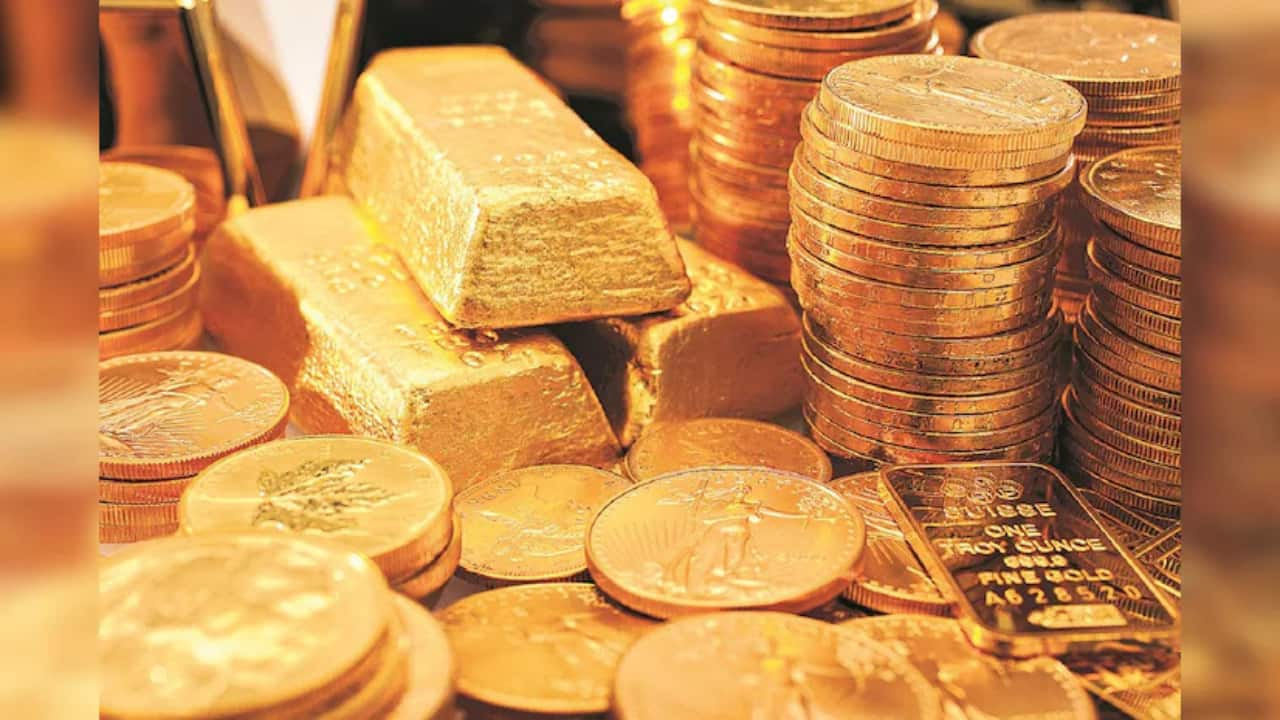Gold is glittering again. Prices on the MCX hit a record Rs 95,000 per 10 grams on April 16, up over 25% in just six weeks, as geopolitical tensions, inflation fears, and market volatility drive demand for the safe-haven asset. But even as investors rush to ride the rally, experts caution that most portfolios may already have too much gold—and that it may be time to rebalance.
Gold is a diversifier, not a growth engine “Gold is great for diversification, not for long-term wealth creation,” says Anil Ghelani, Head of Products at DSP Mutual Fund. “A 5–10% allocation is ideal—it offers stability in uncertain times, but beyond that, it can dilute your portfolio’s growth potential.” Gold’s appeal lies in its low correlation with equities, making it a reliable hedge in downturns.

“During market shocks or crises, gold typically holds up well. It acts as a buffer when risk assets slide,” adds Ghelani. Silver, too, can offer protection, but it’s more tied to industrial cycles.
Indians may already own too much gold While global investors allocate less than 5% of their portfolios to gold and around 25% to equities, Indian households are often skewed in the opposite direction. “Data from the RBI and our own research shows Indian families hold roughly 20% of their wealth in gold, and just 12–15% in equities,” says Shwetha Rajani, Head of Mutual Funds at Anand Rathi. “This overexposure makes portfolios more defensive than needed.
Diversification isn’t just about adding gold—it’s about maintaining the right balance between risk and return.” Rajani recommends that investors stick to a 5% gold allocation as part of their long-term strategy. “Even if gold underperforms in the short term, it adds value as a portfolio stabilizer over longer time horizons.
” Not risk-free—and not always rewarding While gold feels safer than equities, it’s not without its own risks. “Gold’s volatility is around 10%, close to that of equity mutual funds, which range from 13–14% on a 3–5 year rolling basis,” Rajani points out. Worse, gold often lags in long-term returns.
“Between 2014 and 2019, gold returned just 2% annually, while equities delivered around 11%,” she says. “So if you’re betting on gold for wealth generation, you might be disappointed.” Ghelani agrees.
“Gold’s role is not to outperform—it’s to smooth out volatility.” Rupee depreciation has helped gold—but that may change A key reason for gold’s strong historical returns in India has been the weakening rupee. “About 3–3.
5% of gold’s annual return over the past decade comes from currency depreciation,” Rajani explains. But as India’s macroeconomic fundamentals improve, this tailwind may slow—potentially softening rupee-denominated gold returns. She adds, “If you’re buying gold for future consumption—say, a wedding—it makes sense.
But as a long-term investment? It’s not the most efficient asset.” ETFs over physical gold With Sovereign Gold Bonds currently in short supply and physical gold often trading at a premium, ETFs offer a cleaner, tax-efficient route. “ETFs provide liquidity, low cost, and transparency,” says Rahul Gupta, a Mumbai-based advisor.
“They also benefit from equity-like taxation, making them appealing for long-term investors.” Gold ETFs have returned about 12% annualized over the past decade, but Gupta cautions that this isn’t guaranteed going forward. “ETFs are a smart way to hold gold—but they’re not a reason to increase your allocation beyond what’s needed.
” Hedge—but don’t hoard Nikhil Gupta, Founder at Sage Capital, underscores gold’s continued relevance. “In a world of Trump tariffs, central bank stockpiling, and geopolitical instability, gold is a reliable hedge. Central banks, including India and China, are steadily adding to reserves in a SIP-like manner—focusing on stability, not timing.
” Still, even Gupta is clear: “Now may not be the time to switch from equities to gold. If you’d made the move six months ago, sure. But at this point, with equity corrections already priced in, gold is a good-to-have, not a substitute.
” His advice? “Keep your gold exposure, but don’t let it grow unchecked. As uncertainty persists, gold will stay important—but not at the cost of your long-term growth goals.” Disclaimer: The views and investment tips expressed by investment experts on Moneycontrol.
com are their own and not those of the website or its management. Moneycontrol.com advises users to check with certified experts before taking any investment decisions.
.
















